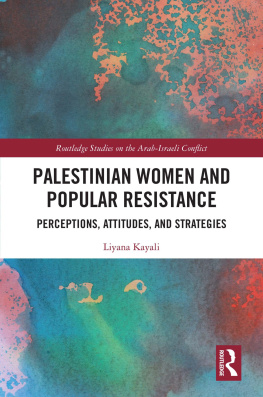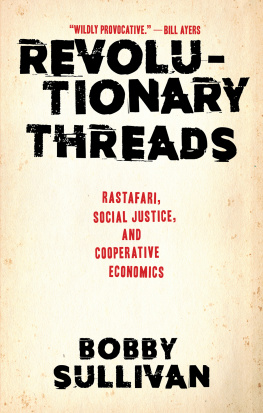Daive Dunkley - Women and Resistance in the Early Rastafari Movement
Here you can read online Daive Dunkley - Women and Resistance in the Early Rastafari Movement full text of the book (entire story) in english for free. Download pdf and epub, get meaning, cover and reviews about this ebook. year: 2021, publisher: LSU Press, genre: Politics. Description of the work, (preface) as well as reviews are available. Best literature library LitArk.com created for fans of good reading and offers a wide selection of genres:
Romance novel
Science fiction
Adventure
Detective
Science
History
Home and family
Prose
Art
Politics
Computer
Non-fiction
Religion
Business
Children
Humor
Choose a favorite category and find really read worthwhile books. Enjoy immersion in the world of imagination, feel the emotions of the characters or learn something new for yourself, make an fascinating discovery.

- Book:Women and Resistance in the Early Rastafari Movement
- Author:
- Publisher:LSU Press
- Genre:
- Year:2021
- Rating:4 / 5
- Favourites:Add to favourites
- Your mark:
- 80
- 1
- 2
- 3
- 4
- 5
Women and Resistance in the Early Rastafari Movement: summary, description and annotation
We offer to read an annotation, description, summary or preface (depends on what the author of the book "Women and Resistance in the Early Rastafari Movement" wrote himself). If you haven't found the necessary information about the book — write in the comments, we will try to find it.
Women and Resistance in the Early Rastafari Movement — read online for free the complete book (whole text) full work
Below is the text of the book, divided by pages. System saving the place of the last page read, allows you to conveniently read the book "Women and Resistance in the Early Rastafari Movement" online for free, without having to search again every time where you left off. Put a bookmark, and you can go to the page where you finished reading at any time.
Font size:
Interval:
Bookmark:
WOMEN AND
RESISTANCE
IN THE EARLY
RASTAFARI
MOVEMENT
WOMEN AND
RESISTANCE
IN THE EARLY
RASTAFARI
MOVEMENT
D. A. DUNKLEY
LOUISIANA STATE UNIVERSITY PRESS
BATON ROUGE
Published by Louisiana State University Press
lsupress.org
Copyright 2021 by Daive Dunkley
All rights reserved. Except in the case of brief quotations used in articles or reviews, no part of this publication may be reproduced or transmitted in any format or by any means without written permission of Louisiana State University Press.
Designer: Mandy McDonald Scallan
Typeface: MillerText
Cover image: Unshackled, by Irica R. Dunkley, 2020. All rights reserved.
Library of Congress Cataloging-in-Publication Data
Names: Dunkley, Daive A., author.
Title: Women and resistance in the early Rastafari movement / D.A. Dunkley.
Description: Baton Rouge : Louisiana State University Press, [2021] | Includes bibliographical references and index.
Identifiers: LCCN 2021004089 (print) | LCCN 2021004090 (ebook) | ISBN 978-0-8071-7569-9 (cloth) | ISBN 978-0-8071-7627-6 (pdf) | ISBN 978-0-8071-7628-3 (epub)
Subjects: LCSH: Women in the Rastafari movementJamaica. | Rastafari movementJamaicaHistory20th century.
Classification: LCC BL2532.R37 D86 2021 (print) | LCC BL2532.R37 (ebook) | DDC 299.6/76082097292dc23
LC record available at https://lccn.loc.gov/2021004089
LC ebook record available at https://lccn.loc.gov/2021004090
FOR IRICA AND THOMAS
CONTENTS
ILLUSTRATIONS
ACKNOWLEDGMENTS
Writing a scholarly book is never entirely an individual achievement. The process normally involves the support of people inside and outside academia. This was certainly the case with the research and writing for Women and Resistance in the Early Rastafari Movement. A diverse community of people, including colleagues, friends, and family, gave invaluable insight, advice, and inspiration that proved essential to the development of this book.
While there were moments when I thought the project would perish because of the difficulty locating sources that directly addressed women who joined Rastafari during its first three decades in the 1930s through 1960s, insight and advice from colleagues and friends, for example, helped me to find alternatives, such as primary sources that involved these women in some way that was meaningful to the project. Documentation at the archives in Jamaica, Britain, and the United States on Rastafari interactions with the British colonial state in Jamaica and on Rastafaris community of Pinnacle and African Reform Church in the 1940s and 1950s were a significant part of my close reading for information that pertained to women.
I am grateful to the diligent staff of the Jamaica Archives, the National Library of Jamaica, the British National Archives, and the Smithsonian Institutions Museum Support Center in Suitland, Maryland, for their assistance with finding primary and secondary information in the colonial government records, newspapers, and anthropological research on the 1930s through 1960s. The anthropology section of the Smithsonians Support Center, led by Jake Homiak, an avid anthropologist and collector of Rastafari artifacts, provided me access to Carole Yawneys voluminous uncataloged papers, among other items in the Smithsonians impressive collection. Yawney herself was a Canadian anthropologist whose work on gender issues in Rastafari marked one of the significant turning points in the scholarship on the movement in the early 1980s. I also found email correspondence between Yawney and Barry Chevannes in the 1990s, which brought back fond memories of my work with Chevannes as his undergraduate research assistant. As is well known, Chevannes, a Jamaican anthropologist, wrote one of the most prominent scholarly books on the Rastafari movement. The Smithsonians Support Center also gave me access to the raw footage of interviews with early Rastafari women done in the late 1970s and early 1980s, interviews conducted by anthropologists Renee Romano and Elliott Leib, among others. Leib also kindly consented to my use of the unedited footage of the interviews.
An interdisciplinary group of scholars from the University of Missouri, the University of the West Indies, and the University College London also helped to improve the structure and clarity of my arguments and bolster my knowledge of secondary sources related not only to Rastafari, but to women and gender studies, Black resistance, Black nationalism, Black socialism, and Black religions. I must thank my colleagues who were particularly generous with their time in reading the chapters. Wilma King and Flore Zephir were the earliest readers of the chapter on Tenet Bent. I had also presented early iterations of this chapter at the 2015 conferences of the Caribbean Studies Association, held in New Orleans, and the National Council for Black Studies, held in Los Angeles, and received helpful feedback from audience members, including Caribbean theologian Delroy A. Reid-Salmon and Caribbean historian Ula Y. Taylor.
At the same time, I am grateful to Martha Kelly, David Schenker, David Amponsah, Mamadou Badienne, Christopher A. D. Charles, Raymond Ramcharitar, and Wilton Lodge, who read and provided me with invaluable feedback on different chapters. I am very grateful to the Department of Black Studies and Research Council of the University of Missouri for their generous start-up funds and grant, respectively, that enabled my research trips to Miami, Jamaica, and Britain over the course of 2014 through 2018. I did interviews in all three places, in addition to examining archival documentation in the latter two. I thank Jenny Keegan of the Louisiana State University Press for her interest in this book and especially for recognizing that Caribbean history expresses much of the integrated history of the Atlantic world. I am also grateful to the anonymous reviewers for suggestions that strengthened the book.
I appreciate the help from the many people outside of academia who directed me to private documentation and provided interviews for this book. These individuals include members of the early Howellite organization and the International Peacemakers Association, formerly the African Reform Church of God in Christ, which were both formed before Jamaica achieved its national independence in 1962. Montinol Howell, Audrey Lewis, Florence Stewart, and Yvonne McLean provided interviews and helped me to locate other early women and men of the Howellites, who I interviewed about women and the early development of the Rastafari movement. Other interviewees who helped to make the book possible include Alphonso Gallimore, Delrieta Simpson, Gerald Lloyd Downer, Canute Swaby, Geraldine E. Fong, Adassa Campbell, Besentie Montague, Stanley Haughton, Douglas McKay, Burnett Hall, and Jonathan Reid.
Karl Dippy Vernon accompanied me to conduct several interviews in Sandy Bay in Clarendon, Jamaica, several of which he also efficiently transcribed. Besentie Montague gave me a warm welcome to the Peacemakers Association compound at Green Bottom in Sandy Bay. She also allowed me to survey records of the organization, including its financial documents. Their preservation of so many documents and photographs that had originated in the 1950s and 1960s is truly commendable. The material was helpful in understanding the colonial and Jamaican government records I had examined at the archives in Jamaica, Britain, and the United States. Montague further facilitated my research with an invitation to attend their church services and the opportunity to speak at the podium on one such occasion. I spoke on the value of maintaining their archive.
I would also like to thank my mother, Miss Joy, who showed me the agency of a poor Jamaican woman from a tender age. Underestimated from youth, she was, nonetheless, able to navigate abuse and poverty and invest in my education. She recognized that education was indeed one of the surest routes out of the persistent poverty of most of the citizens of postcolonial Jamaica.
Next pageFont size:
Interval:
Bookmark:
Similar books «Women and Resistance in the Early Rastafari Movement»
Look at similar books to Women and Resistance in the Early Rastafari Movement. We have selected literature similar in name and meaning in the hope of providing readers with more options to find new, interesting, not yet read works.
Discussion, reviews of the book Women and Resistance in the Early Rastafari Movement and just readers' own opinions. Leave your comments, write what you think about the work, its meaning or the main characters. Specify what exactly you liked and what you didn't like, and why you think so.











